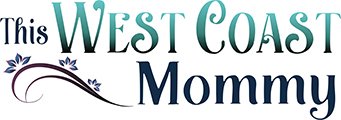Should you top up your RESP this tax season?
Sigh. You know what time of year it is… It’s tax time! We’re all hoping for a refund (or at least not to owe anything!), but have you given any thought as to what you’ll do with your refund? Sure you could splurge on a nice dinner or a weekend away, but have you considered investing that return instead? How about putting those extra dollars to work ensuring your child’s future?
Education – both formal and life-based – is a priority to me, just like it is for virtually every parent. I know that without a post-secondary education, my kids risk getting left behind. Armed with the knowledge that the sooner we started, the more we could take advantage of compound interest on our investments, hubs and I opened a Registered Education Savings Plan (RESP) right after Tee was born four years ago. There’s no question in my mind that my girls will have the opportunity to attend post-secondary schooling, but I do worry about how much will it cost. Heritage Education Funds estimates that a child born today could end up paying over $166,000 in tuition, books, and living expenses for a 4 year program in 2032. Yikes!
There’s no way I’ll have that kind of money just lying around. And that’s why I’m so glad I have an RESP. Each month, a little bit is automatically transferred in directly from our chequing account. I like that I don’t have to think about it, and it comes right off the top so I don’t even miss it. Birthday and Christmas money goes in there and any other cash windfalls we might get. A tax refund is a great opportunity to top up my RESP and maximize my tax benefits and government grants to help me ensure my children’s futures. With the ever increasing cost of post-secondary schooling, every little bit helps. These girls are my inspiration to stay disciplined!
I don’t know who they’ll grow up to be. Will Tee still want to be a teacher and soccer player when she grows up? Will Kay’s charisma help her win in business? Will they go into the creative arts? Their potential seems limitless right now, and I don’t ever want to be in the position of having to tell them they can’t.
With almost 50 years of experience helping Canadian families save for their children’s futures and almost 400,000 children helped along the way, Heritage Education Funds wants you to know your options. If you have kids and you don’t already have an RESP, you’re missing out on significant educations savings incentives.
Are you familiar with all the ways you can get more bang for every buck of your RESP contributions? Check out these really good reasons to top up your RESP this tax season.
Basic Canada Education Savings Grant (CESG)
The Canadian Government tops up your annual RESP contributions by 20%, up to $500 per year and up to a lifetime maximum of $7,200 per child. All children who are Canadian residents and named in an RESP are eligible for this grant. The more you save (up to $2500 a year), the more grant money your child will receive.
Additional CESG
Qualifying families may receive an additional grant of up to 40% on the first $500 of annual RESP contributions. Both the basic and additional CESG have a combined total lifetime maximum of $7,200 per eligible child.
Canada Learning Bond (CLB)
For qualifying families who open an RESP, an initial Canada Learning Bond of $500 is available for the child’s RESP. Subsequent installments of $100 will be available for each year of eligibility until age 15. The primary caregiver’s income must be eligible to receive the National Child Benefit Supplement, which is included in the Canada Child Tax Benefit, and is generally paid to families with a low to moderate income.
Provincial Grants
BC, Alberta, Saskatchewan, and Quebec also offer RESP savings incentives programs. Here in BC, we have the BC Training and Education Savings Program (BCTESP). Every resident born on or after January 1, 2007 will receive a $1200 grant from the province of BC into their RESP. My girls are both eligible to receive this grant once they turn six. Yippee skippee! To qualify, the RESP must be opened prior to the beneficiary’s 7th birthday and the child must be enrolled in an educational program.
Tax Benefits
RESP contributions also let you take advantage of RESP tax benefits. With an RESP, you won’t pay income tax on your investment earnings while your education fund grows. When your child is ready to use his or her RESP for a qualifying post-secondary program, those gains are taxable in the student’s name. But remember that students typically have high exemption status and a lower income, which will end up reducing their tax load.
Do you have an RESP yet? How do you save for your child’s future?
Disclosure: This is a sponsored conversation. All opinions expressed are completely honest and my own. Your experience may differ.









very informative! thanks for sharing the info, some of these things get forgotten thru the year…for me anyway lol.
Lots of great information here. It’s so hard to same anything towards the future education of our kids, but if you don’t have an RESP, you are losing out in a big way when it comes time for our kids to head to college or university. Those costs you outlined are just plain scary!
oh we are so guilty of not doing this yet. I like the idea of the automatic withdrawl. and what a great contest!
We do not have RESP’s for our children, but we do have dedicated savings accounts that get added to regularly (by us AND their grandparents). With a family business in the trades (which school is covered by the union) RESP’s just didn’t seem to fit the bill for us.
We have RESPs for all 5 of our kids, and have been saving since their birth. I love how the government tops it off!
I do have a RESP, the week we got home from the hospital I set up an account. He has more in his RESP then I do my RRSP (I guess I’m depending on him being a world-class surgeon so he can take care of his mama when I’m old).
My husband and I are undecided about an RESP…not because education isn’t important to us (I’m a teacher!) but because I had a friend who couldn’t access her money since they deemed the course she took after high school didn’t qualify. I also recall that for university, the living expenses were the priciest part. Tuition paled in comparison to even books. The bank assured us we just have to apply for the money and they will cover things like textbooks, but I wish there was a firm list of what will and will not qualify, so we can figure out the best way to make our money work for us. It may mean investing in reducing our mortgage so there is more money to be had when she reaches university, for us,